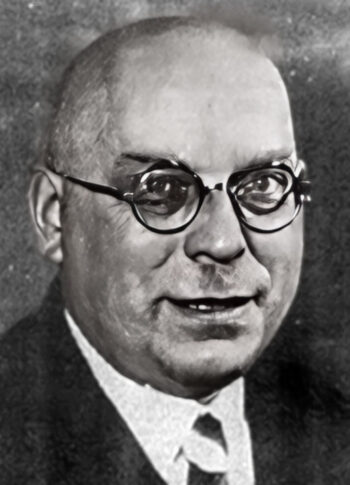Topf & Söhne, J.A.
The company J.A. Topf & Söhne (Topf & Sons) of Erfurt, Germany, was established in 1878 with a focus on brewery equipment (malting plants). Prior to World War One, Topf & Sons expanded into the field of furnace manufacture. By the 1920, Topf & Sons had successfully expanded into the field of steam boilers, but they also manufactured other firing equipment, such as exhaust-heat recuperators, forced-draft devices, chimney constructions, industrial furnaces of all kinds, and cremation furnaces. Up to the beginning of the Second World War, Topf & Sons expanded rapidly.
From 1878 to 1934, Topf’s Furnace Construction Department manufactured about 30,000 furnaces of all types and 3,710 varying sets of brewery equipment.
On the eve of the First World War, Topf & Sons built their first cremation furnaces. Their market share in this field grew steadily, until they became Germany’s dominant cremation-furnace manufacturer at the outbreak of World War II. They also expanded into other fields of engineering, such as heating, ventilation, pest-control and disinfestation equipment.
Cremation furnaces designed and built by Topf were erected in several concentration camps of the Third Reich, among them most prominently all furnaces at the Auschwitz Camp, but also furnaces at the Gusen, Buchenwald and Mauthausen camps. (For details on these furnaces, see the respective section in the entry on crematoria.)
In early March 1946, four of Topf’s leading engineers were arrested by the Soviet occupational forces in Central Germany and repeatedly interrogated, first in Berlin, then in Moscow: Kurt Prüfer (cremation, waste incineration), Karl Schultze (heating and ventilation), Fritz Sander (boiler and furnace construction) and Gustav Braun (head of the project department). Sander died during the interrogations, while the others were sentenced to extended prison terms. Prüfer died in Soviet captivity in 1952, while Schultze and Braun were amnestied and released in 1955 after the Soviet Union had established diplomatic relations with West Germany.

Prüfer and Schultze, who both had been involved in the design and construction of the Topf cremation furnaces, were both asked during their interrogations, how many corpses could be cremated at Auschwitz in one crematorium in one hour. Despite the heavy duress that their Soviet captivity must have put on them, both Topf engineers stated independently that their furnaces could cremate one body in each muffle per hour. This is in agreement with documented and engineering data.
The Topf Company was nationalized by the East German communist authorities in 1948, and renamed twice. It had its sole focus on malting equipment and grain storage. In 1951, the former owner of Topf & Sons relocated to Wiesbaden, West Germany, where he re-established the company, with a focus on cremation furnaces. The company went on a steady decline and was dissolved in 1963.
Topf & Sons is seen by the orthodoxy as one of the most prominent German companies that profited from “the Holocaust” by providing the SS with the means required to erase the traces of its mass-murder activities, and by providing ventilation equipment for the alleged homicidal gas chambers at Auschwitz. However, a realistic look into the actual design of the ventilation equipment and cremation furnaces that Topf produced and installed shows that there was nothing criminal about these devices.
(For more information, see the entries on ventilation and on crematoria, as well as Mattogno/Deana, Part 1, esp. pp. 163-168, 312f.)

You need to be a registered user, logged into your account, and your comment must comply with our Acceptable Use Policy, for your comment to get published. (Click here to log in or register.)